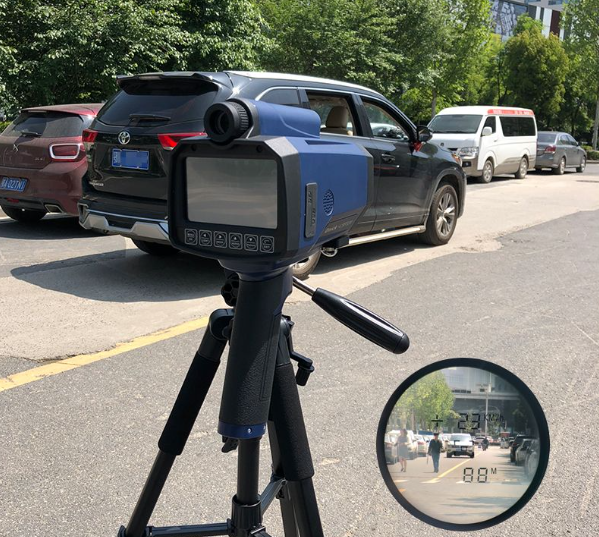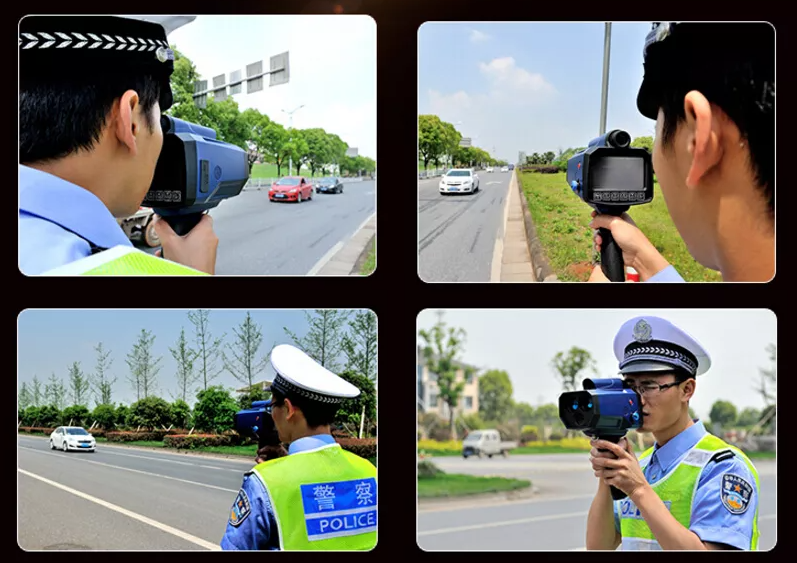Before using the LSP320, thorough preparation is essential to ensure proper operation and smooth enforcement.
First, check the device's battery level. Ensure sufficient battery charge. This can be viewed on the device's 4.3-inch color touchscreen. If the battery is low, replace or recharge the battery promptly to avoid interruptions during enforcement due to low battery.
Second, calibrate the device parameters. Follow the device's instruction manual to calibrate key parameters, such as speed measurement accuracy, to ensure accurate measurement data.
Next, select a suitable enforcement location. Choose a location with a clear view and adequate lighting. Ensure compliance with enforcement regulations and avoid measuring speed in blind spots around curves or areas with numerous obstacles to ensure clear detection of the target vehicle.

Mode Selection and Operation
The LSP320 offers multiple measurement modes, allowing for flexible selection based on different enforcement scenarios.
Continuous Mode: Speed measurement begins when the trigger is pulled. When the trigger is released, the data is automatically saved if the vehicle exceeds the speed limit. To operate, the traffic officer aims the handheld device in the direction of oncoming traffic and pulls the trigger to continuously monitor. Once a speeding vehicle is detected and the trigger is released, the device will save the speeding information. This feature is suitable for high-traffic areas, allowing for quick identification of speeding vehicles.
Lock Mode: Pull the trigger to measure speed. When the desired speed is reached and the vehicle is within the set capture distance, the device automatically locks on and captures the vehicle. Aim at the target vehicle and, when the conditions are met, the device captures the vehicle, making it easy to accurately capture a specific speeding vehicle, especially effective in busy traffic.
Auto Mode: Press the trigger once to start speed measurement and press it again to stop. The device captures the vehicle when it reaches within 20 meters of the optimal focus distance and exceeds the speed limit. Once activated, the device automatically monitors passing vehicles, eliminating the need for constant operation by the traffic officer, significantly reducing workload and making it suitable for use at fixed speed checkpoints.
Recording Mode: Press the trigger to start recording; release the trigger to stop and save the recording. Activate this mode when you need to record the entire process of a traffic violation. This fully captures the incident and provides comprehensive video footage for subsequent case handling.
Tracking Mode: Records video when the vehicle is not within the focus distance, converting it to a still image upon reaching it. When in use, aim at a vehicle approaching from a distance, and the device automatically switches to a recording mode, fully capturing the vehicle's progress and ensuring that no critical information is missed.

Precautions
There are several precautions to follow during use.
Pay attention to device protection. Although the LSP320 meets IP65 waterproof and dustproof standards, it should be cleaned promptly after use in inclement weather to prevent prolonged dust and rain from affecting its performance.
Keep the device stable during operation to avoid vibration that can affect the accuracy of speed measurement and capture. Furthermore, be familiar with the device's functions and operation methods to ensure proficiency and improve efficiency during law enforcement.
Furthermore, strictly adhere to relevant traffic law enforcement regulations to ensure the legality of speed measurement and evidence collection processes. This ensures that the evidence collected can be effectively used in traffic enforcement.